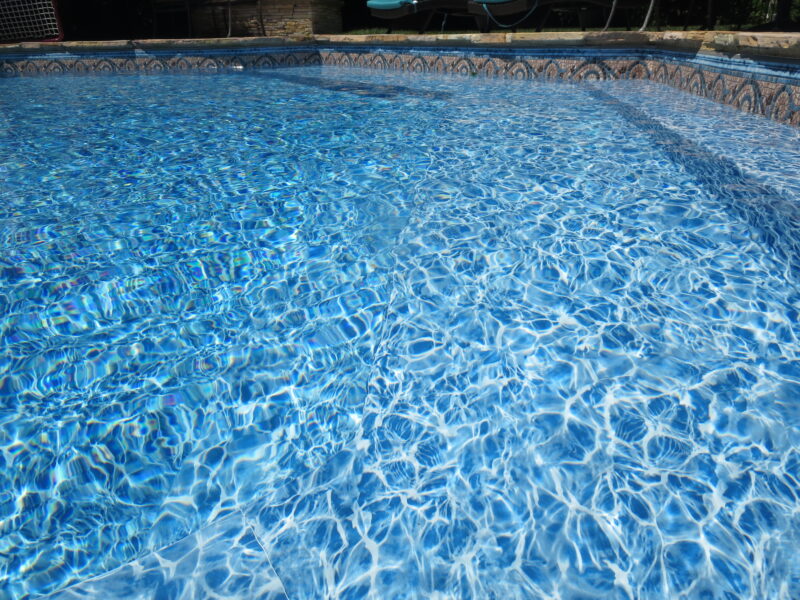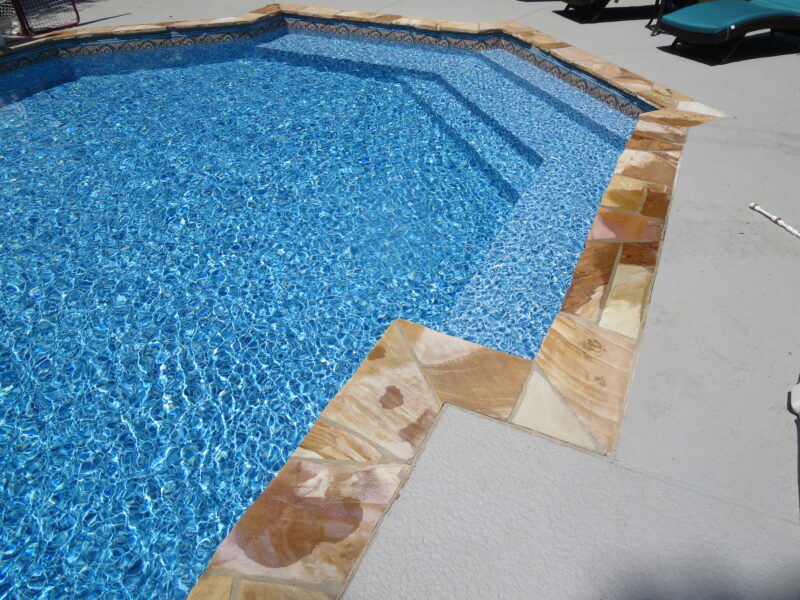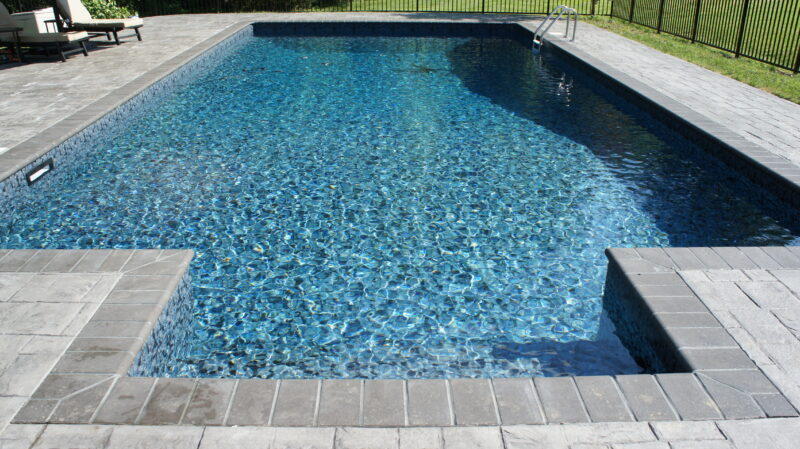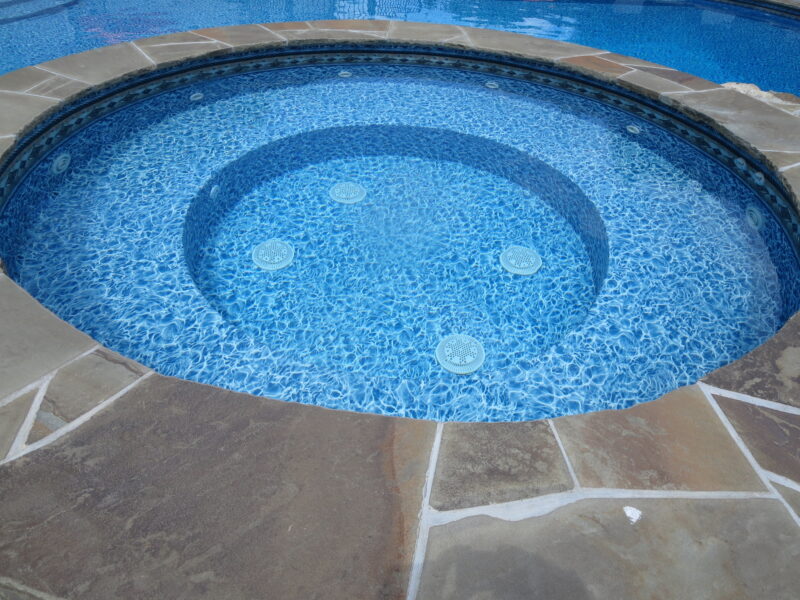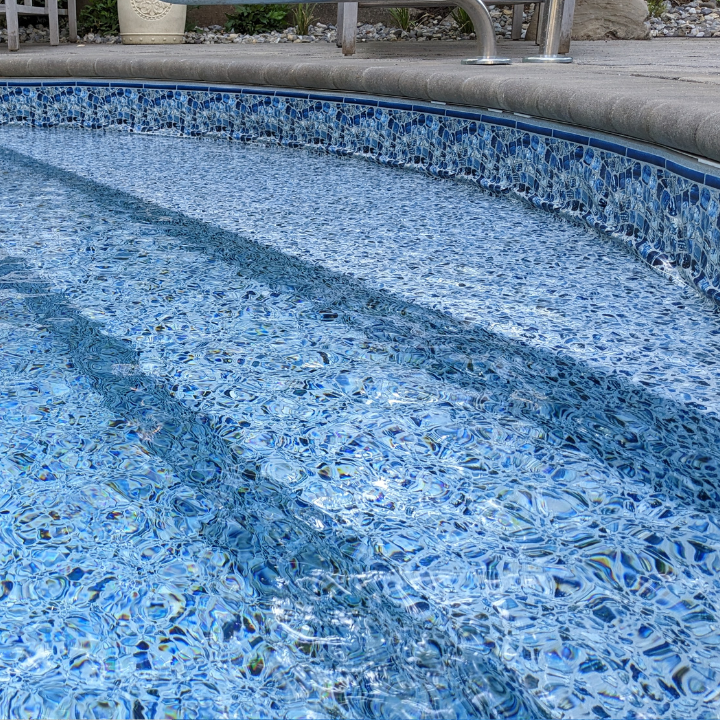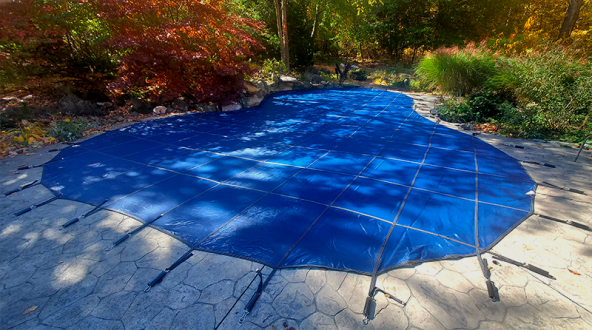How Long Do Pool Liners Last? 5 Tell-Tale Signs For Replacement
15-20 years: that’s how long the average inground vinyl pool liner lasts. Some liners can exceed the 20-year mark if maintained well and if they don’t experience accidents.
But the truth is that most pool owners and dealers don’t always know what to keep an eye out for to ensure the longevity and health of their vinyl liner pool. As a result, pools can experience unexpected accidents, tears, and punctures, and a vinyl pool liner may last just two years before it needs replacing.
Fortunately, Kayden Manufacturing contracts with dealers who provide liners that last in the 15-20-year mark. For individuals not using our liners and dealers, knowing the tell-tale signs of when a vinyl liner needs replacing can help you care for and maintain your liner for the long-haul.
If you’re wondering how long pool liners last — and signs that they might need replacing and/or maintenance — you’ve come to the right place.
In this article, we’ll cover:
- How long do pool liners last on average
- Factors that can affect a pool liner’s lifespan
- Signs that a pool liner needs maintenance and/or replacing
Join us as we investigate how long pool liners last and signs that they need replacing.
How long do pool liners last on average?
When discussing how long pool liners last, we need to remember which type of pool we’re talking about. The answer depends on whether the pool is an in-ground or above-ground pool.
An above-ground pool liner can last anywhere from six to 10 years. In-ground pool liners tend to last about five to nine years.
Here’s the good news: you can increase the lifespan of a pool liner with regular cleaning and maintenance. A new liner that’s well maintained and cared for can last up to 20 years.
Knowing the factors that can speed up the lifecycle of a liner can help you better maintain the health and longevity of your swimming pool liner.
5 Factors that can affect your liner’s lifespan
Sometimes age and premature wear and tear can shorten a liner’s lifespan. Most times though, preventable factors can affect how long a pool liner will last.
The following five factors are worth keeping an eye out for to ensure a long-lasting pool liner:
- Excessive liner use
- Unbalanced chemical levels
- General pool neglect
- Draining a pool of all its water
- Low-quality vinyl material
1. Excessive liner use
It sounds crazy, but excessive pool liner use can cause a pool liner to age prematurely. Using your pool often can make a liner more susceptible to scratches, rips, and tears.
Excessive liner use can cause rips and tears, which can cause water to leak into the soil. If unaccounted for, for inground pools, a pool can sink further into the earth when the soil is wetter than usual, thereby causing more issues.
To avoid issues from excessive use and pool water leaking into the soil, make sure to repair rips and tears as soon as possible.
2. Unbalanced pH levels and excessive chlorine
Perhaps one of the most important factors is chemical use. Sitting water in a pool needs chemicals to ensure the water stays safe and sanitary.
But failing to use chemicals in the right way can reduce the liner’s lifespan and cause premature fading and degradation to the vinyl material.
The two main areas to keep in mind are the acidity level of the pool water and chlorine. If the pool doesn’t have enough chlorine, a liner can wrinkle, shrink, and lose its shape.
If the acidity level — or pH level — isn’t in balance, calcium can form and stick to the liner. You’ll want to ensure your vinyl pool has a pH level of between 7.4 and 7.6, but no more than 7.8.
With pH levels of 7.8 or higher, calcium can form and stick to the liner as mentioned above.
3. General pool neglect
A swimming pool is a significant investment of time, money, and resources. As with other investments, maintenance is key for ensuring an investment like a vinyl pool liner stays in tip-top shape.
Without regular cleanings and maintenance checks, problems can increase over time. As problems multiply, you may need to replace a pool liner sooner.
In our opinion, we recommend cleaning an inground or above-ground vinyl liner at least once a week and testing the pool’s chemistry levels up to three times a week.
Part of the maintenance includes “shocking” a pool — or adding chlorine and non-chlorine pool chemicals to kill bacteria, algae, and other contaminants. Finally, check your liner for tears, bleached spots, and wrinkles now and then.
No matter what type of pool you have, conducting regular maintenance will help increase the lifespan of your pool.
4. Draining a pool
Especially if you have an inground pool, draining a pool of water can cause problems. Completely draining a pool can damage the integrity of the liner, causing the liner to bow and crack.
When the pool bows and cracks, it can lose its shape. Try refilling the pool at this point, and you risk causing bubbles and wrinkles in the liner.
With wrinkles and bubbles, the chances of a tear occurring increase.
If you’re thinking of draining a pool for maintenance, the best practice is to keep your pool filled with some water. Consider draining the pool to one-third of its capacity.
Doing so will help you reduce problems with your liner and keep your pool in great shape.
5. Vinyl quality
As with most vinyl liners, thicker liners tend to be more resistant to tears, cracks, leaks, punctures, and wrinkles. Depending on the thickness and quality of a vinyl liner, you can expect to replace your vinyl liner at different times.
Homeowners: ensure you contract with a quality pool dealer and manufacturer to maximize the longevity of your pool’s liner.
4 signs your pool liner needs replacing
We’ve discussed the factors that contribute to a liner needing repair work. But, how about when a pool liner needs replacing?
The following four signs can indicate that a pool liner needs replacing:
- Discoloration, fading, and staining
- Rips and cracks
- Wrinkles, stretching, and slipping in the pool liner
- Water leaks from the pool
1. Discoloration, color fading, and staining
One of the first signs that indicate your liner needs replacing is faded spots. If you notice your vinyl pool liner is discolored, faded, or stained, your liner likely has experienced ultraviolet (UV) and chemical damage.
With that being said, a liner can become discolored by exposure to the sun. But, usually fading is caused by improper use of chemicals.
Most pool liners in the pool industry will resist fading from UV rays and pool chemistry. Nevertheless, fading and discoloration happen.
As the colored finish of a pool liner begins to fade, the liner can become brittle and bend. To prevent fading, inspect your liner for cracks, rips, and potential leaks.
2. Rips and cracks in the pool liner
Speaking of rips and cracks, they cause leaks. And leaks can cause tons of problems.
If you notice your liner is ripped or cracked, you’ll want to repair it as soon as you can. Checking your pool for cracks and tears is part of proper pool maintenance.
By checking your pool for cracks and tears often, you’ll have time to repair your pool liner before problems cause irreparable harm.
But, if you notice your liner is ripping and cracking often, you may need to invest in a new pool liner replacement.
3. Liner wrinkling, stretching, and slipping
Pool liners tend to stretch over time, which can cause wrinkles in the liner. The wrinkles can pull the liner out of the track at the top of the pool.
Also, older liners tend to wrinkle and stretch more than newer liners. If you notice the liner is beginning to slip out of its track, you can pop the liner back in its place.
You can heat an above ground or inground pool liner with hot water to make it bend with greater ease. Heating the liner will allow you to place it back on its track.
However, if you notice the liner is slipping out of its track, you’ll want to replace your pool liner.
4. Water leaks
Swimming pools using vinyl liners are very susceptible to leaks. A leaking above ground pool can cause a yard to flood.
The earth around the pool can become wet and soft, which can cause the pool to tilt or sink. For inground pools, leaking water can settle into the earth surrounding the pool. Shifts, cracks, and pool walls can collapse if left unchecked.
If you notice your pool has a leak, when you drain your pool, you can use the bucket test. The bucket test helps you determine whether the source of a leak is in the pool or is as a result of natural evaporation.
If the water in the pool recedes below the water level in the bucket, you know that the leak resides in the pool. If the water level stays at the same level as that of the bucket, you’ll know that natural evaporation is occurring.
Pro tip on knowing when to replace your liner
Curious to know if you need a new pool liner? Deterioration, stretching, fading, and stains are all prime indicators that a pool liner needs replacing.
You can learn more on our Twitter/X page here.
Long-lasting pool liners start with long-lasting warranties
The best time to replace a pool liner is before a crack, tear, or problem arises. You can keep your pool liner in great shape by making sure to clean your pool at least once a week, ensuring proper water chemistry, and ensuring pointy pool toys (and other debris) stick clear of the liner.
If an issue arises, though, choose a pool manufacturer and dealer that offers liner warranties. For example, Kayden Manufacturing’s pool liners are backed by a 25-year warranty, with two years full coverage, and pro-rated thereafter.
Since the average liner can last 6 to 10 years — even 10 to 20 years — talk with your local pool dealer about comprehensive pool liner warranties and how they can save you money and help you increase the lifespan of your pool liner.
Best of all, we have several distributors across the country that offer affordable pricing on liners and installation. With more than five different types of pool liners available on today’s market (MarketResearchIntellect.com, 2025), you can’t go wrong with a vinyl liner pool.
For more information about the cost of replacing a vinyl pool liner, give us a call at (201) 880-9898 to speak with a pro and find a distributor in your area.
P.S. – So, you actually read through this whole blog. And, we must apologize profusely for how nonsensical it may have seemed at times. But, you’re actually amazing.
You should really click on the link below and talk to us, because we’ll share just what you’re looking for in our time together. Thanks for reading. We just like to keep you on your toes.
More Helpful Content for You
10 Simple Pool Liner Cleaning/Care Tips to Keep Pool Liners Clean
A pool liner can last anywhere from five to 20…
6 Benefits of Being a Kayden Dealer
In the world of pool building and renovation, the products…
A Quick and Comprehensive Guide to How to Clean a Pool Cover
Keeping a pool maintained and serviced is a no-brainer. But,…

